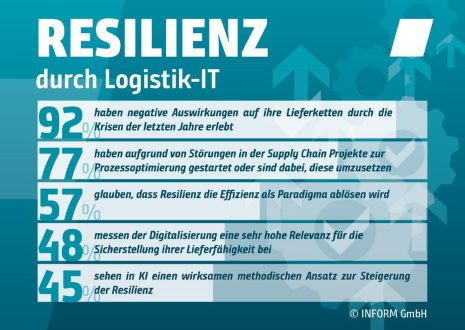
The Supreme Discipline of E-Commerce: Intralogistics Solutions for Food Retail
More than 10 years ago, the first digital e-grocery business concepts with a full-range offering were launched in the German-speaking market. They were frequently ridiculed and critically questioned: Is it really possible to order groceries online and have them delivered to your front door? And is there really a need for it? The rapid development over the last decade provides a clear answer to these questions as the online demand for groceries has experienced a real boom. This development was further reinforced by the 2020 Coronavirus crisis. However, even without the disruptive boost in the course of the COVID-19 pandemic, the significance and awareness for e-grocery has increased considerably.1
The current crisis has led to an increase in digital sales and has also emphasized the significance and advantages of digitization in this area. Experts agree: this trend, which is currently easy to observe, will have a lasting and sustainable impact on the entire industry sector. Consumers are getting used to how they’re behaving during the crisis. Currently, the market share of delivery services in German-speaking countries amounts to approximately 1%. According to PricewaterhouseCoopers, the market share will increase by a significant 3 – 4% by 2023.2 With 2 – 3%, the market share in Switzerland is already comparatively high.
The Supreme Discipline of E-Commerce
The e-grocery business is considered the supreme discipline in e-commerce. The challenges regarding the supply and service value chain, especially with regard to aspects such as freshness, timeliness and service quality, are reaching new dimensions. Ultimately, the main objective is to maintain a seamless and agile supply chain.
Apart from exclusively online food retailers, who serve as pure players in the e-grocery market, e-marketplace operators such as Amazon also integrate groceries into their product range. Even traditional chains are extending their offering to online sales channels and are becoming multi-channel providers, online and offline.
In order to remain competitive, food retailers must increase their flexibility and service several sales channels at the same time.3 The stationary trade needs to change its way of thinking, adapting its business structure to become a combination of online shops and retail stores, so it can offer greater potential. Ideally, the distribution channels will complement each other for mutual benefit. However, is this as easy to implement as it sounds?
Multichannel – How does it work?
State-of-the-art software systems lay the foundations for e-commerce in order to meet the logistical demands of the supply chain.
- Continuous process chains across various systems: from online shops to ERP and warehouse management systems (WMS) to an ideal tour planning.
- Comprehensive warehouse and stock management as the quantity displayed in the shop must be available to its full extent.
- A guaranteed management of weight items and price labeling in goods processes and across all systems.
- Consistent expiration date and batch tracking.
- Careful handling of goods and consolidation of items of different temperature zones.
- The used software systems must have a certain degree of flexibility to be able to provide additional services. These are value-added services for the customer, such as free items or the illustration of short-term or temporary promotions.
How long-established companies are reacting to the e-food trend: Coop.ch
Many renowned supermarket chains are hesitant to take the step towards digitalization and e-commerce – Coop is different. What began as a small retail cooperative is now an international retail and wholesale company with around 90,000 employees.
The successful online shop coop.ch was launched as early as 2001. With more than CHF 150 million in sales, the online division of the Swiss supermarket giant already contributed 1.5% to the total sales of Coop supermarkets (CHF 10,452 million) in 2019.4
Due to the sudden increase in demand during the COVID-19 lockdown in spring 2020, the company reached the limits of its capacity. To avoid supply bottlenecks, a quick solution had to be found. Coop relied on a 2-pillar strategy.
As the first pillar, Coop defined its own Top 100 selection of items for the e-com sector, which contained the 100 most important products of an average Swiss household. With this measure, Coop was able to quickly take the complexity out of the online selection, which normally consists of 11,000 articles, and did so without having to make noticeable cuts for customers in their demand. In addition, the reduction in size of the selection of items simplified the customers’ shopping experience.
As a second pillar, Coop planned a new warehouse location for the Top 100 assortment. The implementation time? An unbelievable 14 days. For this tour de force under enormous time pressure, Coop rented a 6,000 m² warehouse. SSI Schaefer supported Coop with the installation of WAMAS®. The new location had to be equipped with IT and a logistics infrastructure from scratch and be connected to the Coop network. The logistics processes of the new location were deliberately kept as simple as possible. For example, it was decided to route incoming goods directly to the picking station. This made it possible to dispense with separate reserve areas due to the fast warehouse rotation.
Only 14 days after Coop asked SSI Schaefer for support, more than 100 order pickers were handling the daily online orders. The fact that most of the employees had never worked with WAMAS before underlines the particularly user-friendly and very easy operability of the software and the uncomplicated training phase.
The retail trade is not the only business area that is faced with the very particular challenges of the e-commerce boom. While facing these challenges, it became apparent that digitization and automation make a very significant contribution to the economic success. Seasonal fluctuations in demand can be observed in many industry sectors. Businesses are familiar with peak times and prepare for them months ahead. However, sometimes it is simply not possible to predict fluctuations in time and intensity. Nevertheless, the supply chain must work smoothly. Situations like these require fast solutions, maximum flexibility, strong implementation, and of course a competent software partner, who not only understands the industry sector, but also the customer-specific requirements.
About the author:
Karl Graber is Head of Program at WAMAS Enterprise. Karl gained his first experience in IT logistics as a software developer for mobile picking processes. As technical project manager he was subsequently responsible for the implementation of WAMAS in the retail and production sector. As Head of Program, he currently supports a Swiss retail customer during the ongoing renewal and optimization of their IT logistics solution.
1 Source: Das E-Food Buch: Märkte – Player – Strategien, Matthias Schu https://www.efoodbuch.ch/…
2 Source: www.cash.at/…
3 Source: Das E-Food Buch: Märkte – Player – Strategien, Matthias Schu
4 Source: Das E-Food Buch: Märkte – Player – Strategien, Matthias Schu
The SSI Schaefer Group is the world’s leading provider of modular warehousing and logistics solutions. With headquarters located in Neunkirchen (Germany), SSI Schaefer employs approximately 10,500 associates globally, along with seven domestic and international production sites, and approximately 70 worldwide operating subsidiaries. Across six continents, SSI Schaefer develops and implements innovative industry-specific answers to its customers‘ unique challenges. As a result, it plays a key role in shaping the future of materials handling.
SSI Schaefer designs, develops and manufactures systems for warehouses and industrial plants. Its portfolio includes manual and automated solutions for warehousing, conveying, picking and sorting, plus technologies for waste management and recycling. In addition, SSI Schaefer is now a leading provider of modular, regularly updated software for in-house material flows. Its IT team, with a headcount in excess of 1,100, develops high-performance applications, and provides customers with in-depth advice on the intelligent combination of software with intralogistics equipment. The SSI Schaefer IT offering, including its own WAMAS® and SAP products, delivers seamless support for all warehouse and material flow management processes. Solutions from SSI Schaefer improve the productivity and efficiency of customer organizations – not least through the highly precise monitoring, visualization, and analysis of operational metrics for proactive intralogistics management.
SSI Schaefer offers highly sophisticated, turnkey systems. As an international player, it can deliver one-stop solutions to all four corners of the earth. Its comprehensive portfolio encompasses design, planning, consulting, and customer-specific aftersales services and maintenance.
SSI SCHÄFER
Fritz-Schäfer-Strasse 20
57290 Neunkirchen / Siegerland
Telefon: +49 (2735) 70-1
Telefax: +49 (2735) 70-396
http://www.ssi-schaefer.de
Junior Project Manager CR & PR | Global Marketing
Telefon: +49 (2735) 70-9683
Fax: +49 (2735) 70-382
E-Mail: Annika.Nolte@ssi-schaefer.com
Marketing & Kommunikation
Telefon: +49 (2735) 70-252
Fax: +49 (2735) 70-382
E-Mail: melanie.kaempf@ssi-schaefer.de
![]()




